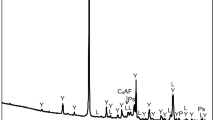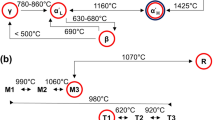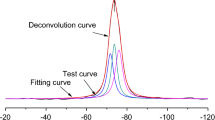Abstract
Cement hydration is the underlying mechanism for the strength development in cement-based materials. The structural and electronic properties of calcium silicates should be elucidated to reveal their difference in hydration reactivity. Here, we comprehensively compared β-C2S and M3-C3S and investigated their structural properties and Bader charge in the unit cell, during surface reconstruction and after single water adsorption via density functional theory. We identified different types of atoms in β-C2S and M3-C3S by considering the bonding characteristics and Bader charge. We then divided the atoms into the following groups: for β-C2S, Ca and O atoms divided into two and four groups, respectively; for M3-C3S, Ca, O, and Si atoms divided into four, four, and three groups, respectively. Results revealed that the valence electron distribution on the surface was more uniform than that on the unit cell, indicating that some atoms became more reactive after surface relaxation. During water adsorption, the electrons of β-C2S and M3-C3S were transferred from the surface to the adsorbed water molecules through position redistribution and bond formation/breaking. On this basis, we explained why β-C2S and M3-C3S had activity differences. A type of O atom with special bond characteristics (no O-Si bonds) and high reactivity existed in the unit cell of M3-C3S. Bader charge analysis showed that the reactivity of Ca and O atoms was generally higher in M3-C3S than in β-C2S. Ca/O atoms had average valence electron numbers of 6.437/7.550 in β-C2S and 6.481/7.537 in M3-C3S. Moreover, the number of electrons gained by water molecules in M3-C3S at the surface was higher than that in β-C2S. The average variations in the valence electrons of H2O on β-C2S and M3-C3S were 0.041 and 0.226, respectively. This study further explains the differences in the hydration reactivity of calcium silicates and would be also useful for the design of highly reactive and environmentally friendly cements.
Similar content being viewed by others
References
J.Y. Huo, Z.J. Wang, T.H. Zhang, R. He, and H.X. Chen, Influences of interaction between cement and ionic paraffin emulsion on cement hydration, Constr. Build. Mater., 299(2021), art. No. 123951.
R. Li, L. Lei, T.B. Sui, and J. Plank, Effectiveness of PCE superplasticizers in calcined clay blended cements, Cem. Concr. Res., 141(2021), art. No. 106334.
S.H. Yin, L.M. Wang, X. Chen, and A.X. Wu, Agglomeration and leaching behaviors of copper oxides with different chemical binders, Int. J. Miner. Metall. Mater., 28(2021), No. 7, p. 1127.
Q.S. Chen, S.Y. Sun, Y.K. Liu, C.C. Qi, H.B. Zhou, and Q.L. Zhang, Immobilization and leaching characteristics of fluoride from phosphogypsum-based cemented paste backfill, Int. J. Miner. Metall. Mater., 28(2021), No. 9, p. 1440.
H.F. Taylor, Cement Chemistry, Thomas Telford, London, 1997, p. 1.
J.M. Crow, The concrete conundrum, Chem. World, 5(2008), p. 62.
J.P. Zhu, K. Yang, Y. Chen, G.X. Fan, L. Zhang, B.K. Guo, X.M. Guan, and R.Q. Zhao, Revealing the substitution preference of zinc in ordinary Portland cement clinker phases: A study from experiments and DFT calculations, J. Hazard. Mater., 409(2021), art. No. 124504.
B. Ercikdi, T. Yılmaz, and G. Külekci, Strength and ultrasonic properties of cemented paste backfill, Ultrasonics, 54(2014), No. 1, p. 195.
I. Cavusoglu, E. Yilmaz, and A.O. Yilmaz, Sodium silicate effect on setting properties, strength behavior and microstructure of cemented coal fly ash backfill, Powder Technol., 384(2021), p. 17.
C.C. Qi and A. Fourie, Cemented paste backfill for mineral tailings management: Review and future perspectives, Miner. Eng., 144(2019), art. No. 106025.
Y. Briki, M. Zajac, M.B. Haha, and K. Scrivener, Impact of limestone fineness on cement hydration at early age, Cem. Concr. Res., 147(2021), art. No. 106515.
X.Y. Pang, W. Cuello Jimenez, and J. Singh, Measuring and modeling cement hydration kinetics at variable temperature conditions, Constr. Build. Mater., 262(2020), art. No. 120788.
R.H. Yang and T.S. He, Influence of liquid accelerators combined with mineral admixtures on early hydration of cement pastes, Constr. Build. Mater., 295(2021), art. No. 123659.
O. Linderoth, L. Wadsö, and D. Jansen, Long-term cement hydration studies with isothermal calorimetry, Cem. Concr. Res., 141(2021), art. No. 106344.
Y.G. Zhang, C. Bouillon, N. Vlasopoulos, and J.J. Chen, Measuring and modeling hydration kinetics of well cements under elevated temperature and pressure using chemical shrinkage test method, Cem. Concr. Res., 123(2019), art. No. 105768.
M. Wyrzykowski, K. Scrivener, and P. Lura, Basic creep of cement paste at early age—The role of cement hydration, Cem. Concr. Res., 116(2019), p. 191.
P. Lalan, A. Dauzères, L. De Windt, D. Bartier, J. Sammaljärvi, J.D. Barnichon, I. Techer, and V. Detilleux, Impact of a 70°C temperature on an ordinary Portland cement paste/claystone interface: An in situ experiment, Cem. Concr. Res., 83(2016), p. 164.
Z.D. Zhang and G.W. Scherer, Physical and chemical effects of isopropanol exchange in cement-based materials, Cem. Concr. Res., 145(2021), art. No. 106461.
S. Tontapha, N. Shinsuphan, W. Sang-Aroon, L. Temprom, S. Krongsuk, W. Jarernboon, P. Chindaprasirt, and V. Amornkitbamrung, A DFT study on electrocatalytic performance of 12CaO·7Al2O3 (C12A7) with electrolytic LiI applied in DSSCs, Surf. Sci., 711(2021), art. No. 121864.
E. Durgun, H. Manzano, P.V. Kumar, and J.C. Grossman, The characterization, stability, and reactivity of synthetic calcium silicate surfaces from first principles, J. Phys. Chem. C, 118(2014), No. 28, p. 15214.
C.C. Qi, L. Liu, J.Y. He, Q.S. Chen, L.J. Yu, and P.F. Liu, Understanding cement hydration of cemented paste backfill: DFT study of water adsorption on tricalcium silicate (111) surface, Minerals, 9(2019), No. 4, art. No. 202.
C.C. Qi, D. Spagnoli, and A. Fourie, DFT-D study of single water adsorption on low-index surfaces of calcium silicate phases in cement, Appl. Surf. Sci., 518(2020), art. No. 146255.
Y. Zhang, X.Y. Lu, D.S. Song, and S.B. Liu, The adsorption of a single water molecule on low-index C3S surfaces: A DFT approach, Appl. Surf. Sci., 471(2019), p. 658.
Y. Zhang, X.Y. Lu, Z. He, and D.S. Song, Molecular and dissociative adsorption of a single water molecule on a β-dicalcium silicate (100) surface explored by a DFT approach, J. Am. Ceram. Soc., 101(2018), No. 6, p. 2428.
I.H. Svenum, I.G. Ringdalen, F.L. Bleken, J. Friis, D. Höche, and O. Swang, Structure, hydration, and chloride ingress in C—S—H: Insight from DFT calculations, Cem. Concr. Res., 129(2020), art. No. 105965.
C.C. Qi, A. Fourie, Q.S. Chen, and P.F. Liu, Application of first-principles theory in ferrite phases of cemented paste backfill, Miner. Eng., 133(2019), p. 47.
N.L. Mai, N.H. Hoang, H.T. Do, M. Pilz, and T.T. Trinh, Elastic and thermodynamic properties of the major clinker phases of Portland cement: Insights from first principles calculations, Constr. Build. Mater., 287(2021), art. No. 122873.
C.C. Qi, Q.S. Chen, and A. Fourie, Role of Mg impurity in the water adsorption over low-index surfaces of calcium silicates: A DFT-D study, Minerals, 10(2020), No. 8, art. No. 665.
J. Huang, B. Wang, Y.T. Yu, L. Valenzano, M. Bauchy, and G. Sant, Electronic origin of doping-induced enhancements of reactivity: Case study of tricalcium silicate, J. Phys. Chem. C, 119(2015), No. 46, p. 25991.
G. Kresse and J. Hafner, Ab initio molecular dynamics for liquid metals, Phys. Rev. B, 47(1993), No. 1, p. 558.
G. Kresse and J. Furthmüller, Efficiency of ab-initio total energy calculations for metals and semiconductors using a plane-wave basis set, Comput. Mater. Sci., 6(1996), No. 1, p. 15.
P. Giannozzi, S. Baroni, N. Bonini, M. Calandra, R. Car, C. Cavazzoni, D. Ceresoli, G.L. Chiarotti, M. Cococcioni, I. Dabo, A. dal Corso, S. de Gironcoli, S. Fabris, G. Fratesi, R. Gebauer, U. Gerstmann, C. Gougoussis, A. Kokalj, M. Lazzeri, L. Martin-Samos, N. Marzari, F. Mauri, R. Mazzarello, S. Paolini, A. Pasquarello, L. Paulatto, C. Sbraccia, S. Scandolo, G. Sclauzero, A.P. Seitsonen, A. Smogunov, P. Umari, and R.M. Wentzcovitch, QUANTUM ESPRESSO: A modular and open-source software project for quantum simulations of materials, J. Phys.: Condens. Matter, 21(2009), No. 39, art. No. 395502.
J.P. Perdew, K. Burke, and M. Ernzerhof, Generalized gradient approximation made simple, Phys. Rev. Lett., 77(1996), No. 18, p. 3865.
K.H. Jost, B. Ziemer, and R. Seydel, Redetermination of the structure of β-dicalcium silicate, Acta Crystallogr. Sect. B Struct. Crystallogr. Cryst. Chem., 33(1977), No. 6, p. 1696.
M.N. de Noirfontaine, F. Dunstetter, M. Courtial, G. Gasecki, and M. Signes-Frehel, Polymorphism of tricalcium silicate, the major compound of Portland cement clinker: 2. Modelling alite for Rietveld analysis, an industrial challenge, Cem. Concr. Res., 36(2006), No. 1, p. 54.
P.W. Tasker, The stability of ionic crystal surfaces, J. Phys. C: Solid State Phys., 12(1979), No. 22, p. 4977.
C. Noguera, Polar oxide surfaces, J. Phys.: Condens. Matter, 12(2000), No. 31, p. R367.
S.J. Tjung, Q. Zhang, J.J. Repicky, S.F. Yuk, X.W. Nie, N.M. Santagata, A. Asthagiri, and J.A. Gupta, STM and DFT studies of CO2 adsorption on O-Cu(100) surface, Surf. Sci., 679(2019), p. 50.
Z. Jiang, P. Qin, and T. Fang, Investigation on adsorption and decomposition of H2S on Pd (100) surface: A DFT study, Surf. Sci., 632(2015), p. 195.
A. Lloyd, D. Cornil, A.C.T. van Duin, D. van Duin, R. Smith, S.D. Kenny, J. Cornil, and D. Beljonne, Development of a ReaxFF potential for Ag/Zn/O and application to Ag deposition on ZnO, Surf. Sci., 645(2016), p. 67.
P. Tereshchuk and J.L.F. da Silva, Ethanol and water adsorption on close-packed 3d, 4d, and 5d transition-metal surfaces: A density functional theory investigation with van der Waals correction, J. Phys. Chem. C, 116(2012), No. 46, p. 24695.
R. Shepard, S. Shepard, and M. Smeu, Ab initio investigation into the physisorption of noble gases on graphene, Surf. Sci., 682(2019), p. 38.
C.L. Peng, F.F. Min, L.Y. Liu, and J. Chen, A periodic DFT study of adsorption of water on sodium-montmorillonite (001) basal and (010) edge surface, Appl. Surf. Sci., 387(2016), p. 308.
Y. Xin, S.C. Hou, L. Xiang, and Y.X. Yu, Adsorption and sub-stitution effects of Mg on the growth of calcium sulfate hemihydrate: An ab initio DFT study, Appl. Surf. Sci., 357(2015), p. 1552.
J. Liu, S.M. Wen, J.S. Deng, X.M. Chen, and Q.C. Feng, DFT study of ethyl xanthate interaction with sphalerite (110) surface in the absence and presence of copper, Appl. Surf. Sci., 311(2014), p. 258.
C.X. Cai, S.S. Wei, Z.P. Yin, J. Bai, W.W. Xie, Y. Li, F.W. Qin, Y. Su, and D.J. Wang, Oxygen vacancy formation and uniformity of conductive filaments in Si-doped Ta2O5 RRAM, Appl. Surf. Sci., 560(2021), art. No. 149960.
R.F.W. Bader, A quantum theory of molecular structure and its applications, Chem. Rev., 91(1991), No. 5, p. 893.
W. Tang, E. Sanville, and G. Henkelman, A grid-based Bader analysis algorithm without lattice bias, J. Phys.: Condens. Matter, 21(2009), No. 8, art. No. 084204.
Y.D. Scherson, S.J. Aboud, J. Wilcox, and B.J. Cantwell, Surface structure and reactivity of rhodium oxide, J. Phys. Chem. C, 115(2011), No. 22, p. 11036.
G. Henkelman, A. Arnaldsson, and H. Jónsson, A fast and robust algorithm for Bader decomposition of charge density, Comput. Mater. Sci., 36(2006), No. 3, p. 354.
Z. Cheng, B.J. Sherman, and C.S. Lo, Carbon dioxide activation and dissociation on ceria (110): A density functional theory study, J. Chem. Phys., 138(2013), No. 1, art. No. 014702.
N. Kuriakose, A. Mohan T, and P. Ghosh, Coverage dependent CO2 activation on Ti2C(111) surface: Effect of intrinsic subsurface Carbon vacancies, Surf. Sci., 706(2021), art. No. 121798.
E. Durgun, H. Manzano, R.J.M. Pellenq, and J.C. Grossman, Understanding and controlling the reactivity of the calcium silicate phases from first principles, Chem. Mater., 24(2012), No. 7, p. 1262.
M. Laanaiya, A. Bouibes, and A. Zaoui, Understanding why Alite is responsible of the main mechanical characteristics in Portland cement, Cem. Concr. Res., 126(2019), art. No. 105916.
G.J. Li, W.G. Hu, Y.N. Sun, J.Y. Xu, X. Cai, X.L. Cheng, Y.Y. Zhang, A.C. Tang, X. Liu, M.Y. Chen, W.P. Ding, and Y. Zhu, Reactivity and lability modulated by a valence electron moving in and out of 25-atom gold nanoclusters, Angew. Chem., 132(2020), No. 47, p. 21321.
S. Sarugaku, M. Arakawa, T. Kawano, and A. Terasaki, Electronic and geometric effects on chemical reactivity of 3d-transition-metal-doped silver cluster cations toward oxygen molecules, J. Phys. Chem. C, 123(2019), No. 42, p. 25890.
A. Mascaraque, L.M.d.l Garza, and E.G. Michel, Electronic structure and reactivity of the Co/MoS2(0001) interface, Surf. Sci., 482–485(2001), p. 664.
Acknowledgements
This work was financially supported by the National Natural Science Foundation of China (No. 52004330). This work was also supported by resources provided by the Pawsey Supercomputing Centre with funding from the Australian Government and the Government of Western Australia.
Author information
Authors and Affiliations
Corresponding author
Additional information
Conflict of Interest
The authors declare that they have no conflict of interest.
Supplementary Information
12613_2021_2364_MOESM1_ESM.docx
Hydration reactivity difference between dicalcium silicate and tricalcium silicate revealed from structural and Bader charge analysis
Rights and permissions
About this article
Cite this article
Qi, C., Xu, X. & Chen, Q. Hydration reactivity difference between dicalcium silicate and tricalcium silicate revealed from structural and Bader charge analysis. Int J Miner Metall Mater 29, 335–344 (2022). https://doi.org/10.1007/s12613-021-2364-5
Received:
Revised:
Accepted:
Published:
Issue Date:
DOI: https://doi.org/10.1007/s12613-021-2364-5




